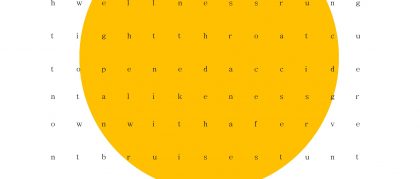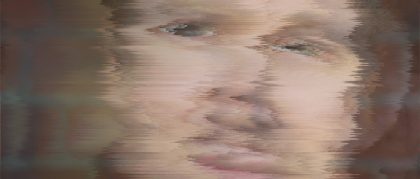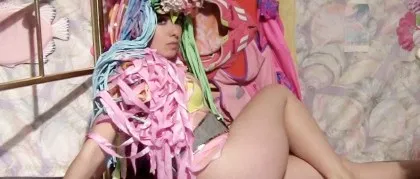
Contacts | Submissions | Buzzwords | Twitter | Facebook
© 2000-2017 3:AM Magazine | Design & build by Rhys Tranter, Florian Kräutli and STML

pink-loved and blind sided with and &s
filmed viscuous cramps and glued with
skincontacted and gones of sulphated
minds and & tried a better number & and
momentary relapse on its arm looked
New poetry by Molly Bergin.

Bentham was undeniably strange, one of the strangest human beings who ever lived. In my view, it was the acute kindness of his disposition that drove him to formulate proposals that his many critics have seized upon as revealing that “iron cage” of modernity that you mentioned earlier–the Panopticon prison system, control through architecture and surveillance, being one of the primary examples. But he spun off so many elaborate schemes that it is very difficult to see how they fit together, especially as part of a historical trajectory headed toward a better society.
Continuing the End Times series, Richard Marshall interviews Bart Schultz.

What seasoned Swiss director Simone Blattner did with Abraumhalde in the Kammerspiele Bonn is particularly interesting. Blattner cut up the usual monologue into six voices: five men and one woman. With a remarkably clear eye, Blattner made explicit what is sometimes only implicit in Jelinek.
Marcel Inhoff reviews a performance of Abraumhalde by Elfriede Jelinek.

In certain respects the Sunrise murder was undoubtedly one of the most extraordinary events in South African criminology. So much so that some of our senior detectives still refer to it as being — quite literally — the most accomplished of murders. The case is also of interest because it shows us how sheer luck and coincidence in similar cases are sometimes of greater value to the detective than all of his skill. However, these days it’s generally accepted that skill also played a substantial role in this particular case.
The small bushveld town of Sunrise lies so far from the main roads, is so removed from the hustle and bustle of the big wide world that most city-dwellers haven’t even heard of it. There is a small train station three miles from the town which is the village’s only connection with the outside world. Every so often a lost motor-car finds its way to Sunrise. And then the driver and passengers are usually surprised to come across a village in such a lonely spot.
By Eugène Marais. Translated from Afrikaans by Christo Snyman.

‘Got any change?’ the beggar says.
I type in my pin number at the cash point and feel Damon’s lips on the back of my neck. The machine displays amounts I can withdraw and Damon slides his hand under my t-shirt. I push the button to request the maximum.
‘Couldn’t spare any change?’
The beggar sits on cardboard. Damon’s belly against my lower-back.
The machine gives me the money and Damon and I go inside the shop for supplies. I pay and step outside.
‘A bit of change?’
By Andy West.

Engagement with the natural world is a key part of Seed, which is at once slightly odd and highly relevant. We engage with raw nature less than we used to, especially those of us who grew up before the internet. Also, this is a digital book, disembodied, not an object made of natural materials that can be touched, smelled, and experienced directly through the senses. So while there seems to be a certain nostalgia for the pre-digital world, it is paradoxically expressed in a shiny, postlapsarian, Google-labbed form.
Julian Hanna reviews Seed by Joanna Walsh.

Dance Poetry Artist Residency at Hurst Castle.
The Enemies Project: Duos is a new series of commissioned collaborative poems and texts in conjunction with 3:AM Magazine. The series will showcase brand new works of avant-garde and literary work between contemporary writers, paired and provoked especially for the enterprise, often across nations and languages.
New collaborative poetry by Jonas Gren / Harry Man.

I like to think I’ve inspired women to be more authentic and embodied in their power and leadership. In terms of changing the way people look at art I want to restore our faith in holistic art – TOTAL ART – that which is for and by the community; interdisciplinary art that occurs in sacred, transformative spaces where artists hold court as paradigm shifters and leaders.
Continuing the States of Anxiety series, Jana Astanov interviews Katie Cercone.

Lydia Lunch relates the broader cultural impact of the moment: “I wasn’t expecting the toilets at CBGB’s to be the bookends of Duchamp’s urinal, but then again maybe 1977 had more in common with 1917 than anyone at the time could’ve imagined. The anti-art invasion of Dada… & the Surrealist pranksters who shadowed them had a blast pissing all over everybody’s expectations. The anti-everything of No Wave was a collective caterwaul that defied categorisation, defiled the audience, despised convention.”
Louis Armand on the passing of the New York moment.

While physics has had tremendous successes it is still an open question whether there is fundamental ontology and laws and if there is whether they can be found by the methods of physics. To the extent that this aim of physics is achieved we should be able to understand how what Sellars calls “the manifest image” emerges from fundamental physics. That is what I mean by “descrying the world in physics.”
Continuing the End Times series, Richard Marshall interviews Barry Loewer.